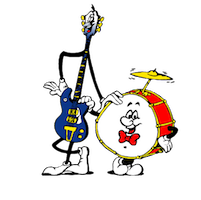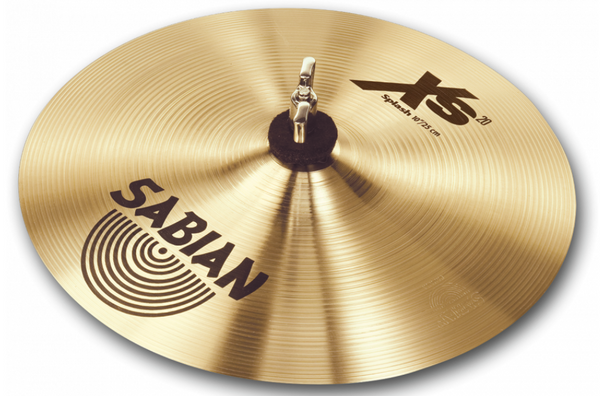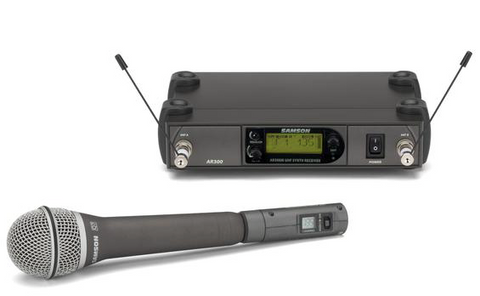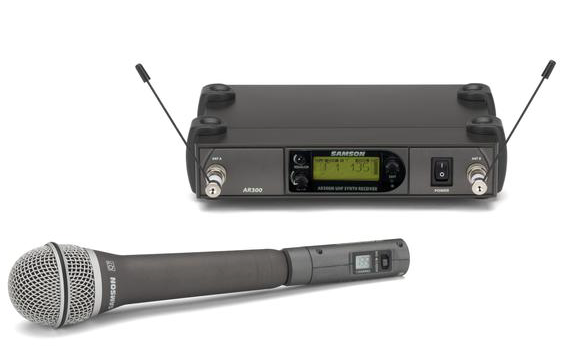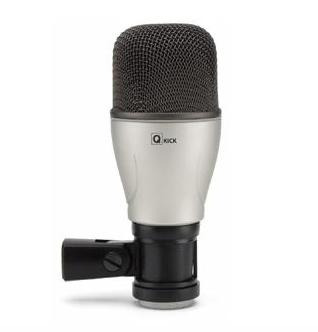Products
Sabian B8 Pro Splash Cymbal
$ 49.00 $ 91.00
Bright response is immediate, cutting and somewhat glassy for fast accents.
METAL B8
WEIGHT Thin
Sabian B8X Splash Cymbal
$ 49.00 $ 96.00
Extremely fast and bright with punchy, high-end cut for fast accents.
METAL B8
WEIGHT Thin
Sabian FRX Ride Cymbal
$ 449.99 $ 746.00
If your current ride is causing headaches in your band, you have two options: get a new band, or get the 21" Sabian FRX Ride. This professional ride cymbal is fully dynamic yet specially tuned to keep from poking through a mix. There's no need to pull punches with the FRX series: micro-perforations near the bell and along the edge subdue offensive overtones without significantly impacting volume or range. This makes the Sabian FRX Ride a solid contender for smaller stages, houses of worship, pit orchestras, and close-miking applications. Sabian's lightweight B20 construction gives the FRX Ride a dark, defined attack and buttery-smooth wash that players will enjoy at home, onstage, and at all sound levels.
- Type:Ride
- Size:21"
- Weight:Thin
- Finish:Natural
- Material:B20
- Sound:Bright
- Pitch:Mid
Sabian HH Series Garage Ride Cymbal
$ 405.00 $ 675.00
Inspired by Claus Hessler, the 20" Garage Ride is a versatile model with dry, controlled stick and a low level of wash, even when you dig in. Its smaller size for a ride makes it an ideal all-purpose cymbal that doubles nicely as a very-controllable crash. Medium-Thin with a small raw bell, it attacks with minimal sustain and dry, controlled stick. SABIAN introduces HH Remastered - with more hammering, more complexity, and more tone. As a result, HH Rides sound more traditional and complex. Much like a remastered classic album is taken from the great to the sublime, HH Remastered adds complexity and tone to each cymbal, delivering unmatched sonic texture across the entire line.
METAL: B20
WEIGHT: Medium - Thin
Sabian HH Series Medium Ride Cymbal
$ 369.00 $ 614.00
A very musical ride. Smooth, warm, and woody stick response and nice bell definition. HH Remastered cymbals deliver more hammering, more complexity, and more tone.
METAL: B20
WEIGHT: Medium
Sabian HH Series Thin Crash Cymbal
$ 299.00
Full-bodied musical response is low, dark and warm but with rapid decay. HH Remastered cymbals deliver more hammering, more complexity, and more tone.
METAL: B20
WEIGHT: Thin
Sabian HH Series Vanguard Crash Cymbal
$ 299.00
A thin, light design with pinpoint lathing and smaller bell, HH Vanguard is ideal for players who want darker cymbals with quick responses. The smaller cup and extended profile delivers clean, woody stick definition for such a thin cymbal.
METAL: B20
WEIGHT: Thin
Sabian HHX Phoenix Ride Cymbal
$ 439.00 $ 731.00
Modern players who thrive on exploring a new sonic range will love the dark, mature tones that rise Phoenix-like from this special Ride. If that sounds too much like jazz to you, rest assured it's not. With the most cut in the collection, it's also the most consistent and controlled.
METAL: B20
WEIGHT: Medium - Heavy
Sabian HHX X-Plosion Crash Cymbal
$ 319.00
Simmering, dark tones boosted by explosive power deliver a toneful explosion.
METAL: B20
WEIGHT: Medium - Thin
Sabian XS20 Medium Thin Crash Cymbal
$ 130.00 $ 165.00
Combining the response of a thin model with the increased power of a medium-weight, this is a highly versatile and effective crash for any drummer.
METAL B20
WEIGHT Medium - Thin
Sabian XS20 Splash Cymbal
$ 89.00 $ 141.00
The fast, bright response from this small, extra-thin model is great for quick, splashy punches and accents that cut in any music.
METAL B20
WEIGHT Extra - Thin
Sabian XSR Rock Crash Cymbal
$ 145.00 $ 240.00
Designed to deliver full, bright and powerful accents that cut
SOUND Bright
WEIGHT Medium
Sadowsky MetroExpress 21-Fret Hybrid P/J 4-String Electric Bass Guitar Left Handed - Solid Black High Polish
$ 899.00
- Serial Number: SMED003283-21
- Weight: 8.6lbs
Specifications
- Body: Okume
- Neck: Maple
- Fingerboard: Morado
- Nut Width: 1.5"
- Number of Frets: 21
- Scale Length: 34"
- Neck Pickup: Sadowsky P Style
- Bridge Pickup: Sadowsky J Style
- Controls: Volume knob, Balance knob, Treble knob, and Bass knob
- Hardware: Chrome
- Tuners: Sadowsky Open Gear Tuners
- Accessories: Gig bag

Sadowsky MetroExpress 21-Fret Vintage J/J 4-String Electric Bass - Solid Black High Polish
$ 899.00 $ 1,258.60
- Serial Number: SMED00021520
- Weight: 8.2 lbs
- Sadowsky MetroExpress 21-Fret Vintage J/J Bass
- 4-string electric bass
- 34" (864 mm) long scale
- Bolt-on construction
- Okume body
- Maple neck
- Maple fingerboard
- 12" fingerboard radius
- Sadowsky Just-A-Nut III nut
- 1.5" (38.5 mm) nut width
- 21 nickel silver frets (width: 0.094" (2.4 mm) / height: 0.051" (1.3 mm))
- Passive Sadowsky J-Style pickup (neck)
- Passive Sadowsky J-Style pickup (bridge)
- Active Sadowsky 2-way electronics
- Controls for Volume / Balance / Treble / Bass
- Sadowsky Light machine heads with open gear
- String spacing 2.36" (60 mm)
- Sadowsky S-style security locks
- Sadowsky bridge with quick string release
- Chrome hardware
- Stainless steel 045 - 105 strings
- Solid Black High Polish finish
- Incl. hex key tools
- Incl. Sadowsky Portabag (SAC BAG BASS PORTA) Gig Bag

Sadowsky MetroExpress 21-Fret Vintage J/J 4-String Electric Bass - Solid Black High Polish
$ 899.00 $ 1,258.60
- Serial Number: SMEF001088-20
- Weight: 8.2lbs
- Sadowsky MetroExpress 21-Fret Vintage J/J Bass
- 4-string electric bass
- 34" (864 mm) long scale
- Bolt-on construction
- Okume body
- Maple neck
- Maple fingerboard
- 12" fingerboard radius
- Sadowsky Just-A-Nut III nut
- 1.5" (38.5 mm) nut width
- 21 nickel silver frets (width: 0.094" (2.4 mm) / height: 0.051" (1.3 mm))
- Passive Sadowsky J-Style pickup (neck)
- Passive Sadowsky J-Style pickup (bridge)
- Active Sadowsky 2-way electronics
- Controls for Volume / Balance / Treble / Bass
- Sadowsky Light machine heads with open gear
- String spacing 2.36" (60 mm)
- Sadowsky S-style security locks
- Sadowsky bridge with quick string release
- Chrome hardware
- Stainless steel 045 - 105 strings
- Solid Black High Polish finish
- Incl. hex key tools
- Incl. Sadowsky Portabag (SAC BAG BASS PORTA) Gig Bag

Sakae Maple "Real Black" Snare Drum
$ 549.99 $ 807.00
Your snare is the centerpiece, the rock, the foundation upon which the rest of the kit and a drummer’s entire performance is built. All of Sakae's attention to detail, meticulous craftsmanship and sound research and development can be seen in the Sakae Osaka Heritage snares.
FEATURES
- Shell Size: 6.5" x 14"
- Shell Construction: 9-Ply Maple
- Mighty Halo Flanged Hoops
- Real Black Color
- Lacquer Finish
Samson Airline Synth AX300/AR300 UHF Wireless Microphone System
$ 449.99 $ 689.99
AirLine Synth Wireless Systems
Samson began as a wireless technology company over 25 years ago. We packed our high-quality wireless gear with value and professional sound capability. Now, we introduce the most versatile, technologically advanced wireless system in our history: AirLine Synth.
With its sleek, frequency-agile micro transmitters, one button channel selection and infrared scanning, the technology behind our new AirLine Synth provides easy setup and clear reception at every gig in every location.
Ideal for media production, house of worship and of course, professional music production of all varieties, AirLine Synth is a true diversity system that is frequency selectable, with the capability of operating on over 300 frequencies* with up to 11 simultaneous systems**.
AX300 - AirLine Synth Handheld Transmitter

Small and lightweight, the AX300 plugs directly into any dynamic microphone you want to use and we include the Samson Q7, a great mic for vocals and presentations. The transmitter is so lightweight and small, it feels like it's a natural part of the mic.
The AX300 contains a precision mic preamp that never colors your sound, a digital channel readout, a low battery indicator and a mute switch.
AR300 - AirLine Synth Receiver

The Handheld System includes the AR300 AirLine Synth Receiver. Roadworthy durability and crystal clear reception in any location make this receiver an intelligent choice for discerning professionals. Featuring automatic RF scanning and infrared programming, balanced and unbalanced outputs as well as front or rear mountable antennae, the AR300 is loaded with convenience and cutting-edge technology. We also designed it with a backlit LED front panel display that shows AF/RF levels, frequency, audio output level and group for easy setup on the fly. Up to four AR300M modules can also be rackmounted in a single rackspace using the AR4300 receiver.
* Channels: 320 channels 25kHz Step (N and U Bands), 71 channels 25kHz Step (E Band)
** Simultaneous Systems: Up to 11 (N and U Bands), Up to 5 (E Band)
*** Operating Frequency: 639.025–647 MHz, 798.025–806 MHz (not for use in the USA), 863–865 MHz (not for use in the USA)
Samson HM40 Horn/Woodwind Condenser Microphone
$ 199.99 $ 599.99
- Cardioid pickup pattern for outstanding sound
- Horn bell clamp included for easy attachment to horn
- P3 connector for use with many Samson beltpack systems
Samson Q Kick Dynamic Drum Microphone
$ 79.99 $ 199.99
An incredibly well-made kick drum mic. Rigid, and featuring a huge diaphragm element, the Q Kick sounds better than mics costing hundreds more.Features
- Large diphragm dynamic element
- Cardioid polar pattern reduces feedback
- Gold-plated XLR connector
- Mic stand swivel mount included
- Carry pouch included
Schecter S-Shape Hardcase (SGR-3S) B-Stock
$ 139.00
- Case Style: PE Molded Hardcase
- Origin: China
- Color: Black w/ Blue Interior
- Material: PE (Polyethylene) Plastic exterior w/EPS foam protective interior with deep plush lining/ Heavy Duty Black Aluminum valance
- Handle: Through-bolted handle for extra strength
- Latch: Black Powder coated Metal w/Lockable middle latch
- Pockets: 3 Accessory Compartments
**Case has scratches on both sides **

Schlagwerk Percussion CP 550 Agile Base Natural Cajon
$ 249.99 $ 385.00
Agilis is a Latin word meaning “easily moved”. The word “agile” has developed from this in many languages as a synonym for energy, ease and liveliness. A fitting name for Schlagwerk’s new cajon series. The technical core is formed by a removable element for creating an exceptionally fast and precisely responsive snare sound.
This sensitive attack is produced in the base & dual models using a snare carpet. In the pro models a flexible damping system combined with adjustable string tension ensures a very agile attack.
Playing surface: Gabon
Resonance box: 8 layers of birch, approx. 30 x 30 x 50 cm
Agile snare technology
The Agile base cajon stands out due to its innovative Agile snare technology, providing a perfect attack. The fully bonded playing surface offers crisp high notes and a powerful bass along with clear but not too dry snare and bass separation.
Seagull Artist Mosaic Anthem EQ SF Acoustic Guitar B STOCK - Natural
Sold Out $ 1,800.00
The Seagull Artist line is renewed with the addition of the Artist Mosaic EQ. Offering a whole set of new features, this guitar checks all the boxes for any serious musician with a smooth semi-gloss natural finish, a full bodied dreadnought mahogany body shape for exceptional tone and projection, a highly vibrant and resonant solid spruce top, new Seagull Artist inlays, discretely placed LR Baggs Anthem system, and utmost attention to detail and build quality. The Seagull Artist Mosaic EQ, simply better.
- Serial Number: 050536900003
- Weight: 4.8lbs
- SKU: 050536F
DIMENSIONS & SPECS
| Solid Wood | |
|---|---|
| Body Depth | |
| Body Length | |
| Lower Bout | |
| Nut Width | |
| Scale | |
| Upper Bout | |
| Waist |
**This Acoustic guitar is a factory SF model, it has a minor finish blemish on the back of the body and a small glue spot the side of the neck (see photos). Guitar has been discounted**
Seagull Entourage Acoustic Guitar - Autumn Burst
$ 699.00 $ 882.00
Autumn is a time for change and the Seagull Entourage Series has undergone a beautiful change of its own with its new Autumn Burst finish! The Entourage Autumn Burst also boasts other exciting new features, such as an eye-catching white binding, a redesigned pickguard, and a richer/shaded finish on the back and sides. The traditional dreadnought shape is perfect to help your playing project over campfire sing-alongs or cut through any given acoustic situation.
- Serial Number: 046492001640
- Weight: 4.8lbs
- SKU: 046492
DIMENSIONS & SPECS
| Shapes |
Dreadnought |
|---|---|
| Sounds |
Warm |
| Lifestyles |
Guitar Grom |
| Body Depth |
4.9" (124.46 mm) |
| Body Length |
19.8" (502.92 mm) |
| Lower Bout |
15.87" (403.1mm) |
| Nut Width |
1.72" (43.69mm) |
| Scale |
24.84" (630.94mm) |
| Upper Bout |
11.38" (289.05mm) |
| Waist |
10.54" (267.72mm) |

Seagull Entourage Acoustic Guitar - Autumn Burst
$ 699.00 $ 882.00
Autumn is a time for change and the Seagull Entourage Series has undergone a beautiful change of its own with its new Autumn Burst finish! The Entourage Autumn Burst also boasts other exciting new features, such as an eye-catching white binding, a redesigned pickguard, and a richer/shaded finish on the back and sides. The traditional dreadnought shape is perfect to help your playing project over campfire sing-alongs or cut through any given acoustic situation.
- SKU: 046492
- Serial Number: 046492001873
- Weight: 4.8lbs
DIMENSIONS & SPECS
| Shapes |
Dreadnought |
|---|---|
| Sounds |
Warm |
| Lifestyles |
Guitar Grom |
| Body Depth |
4.9" (124.46 mm) |
| Body Length |
19.8" (502.92 mm) |
| Lower Bout |
15.87" (403.1mm) |
| Nut Width |
1.72" (43.69mm) |
| Scale |
24.84" (630.94mm) |
| Upper Bout |
11.38" (289.05mm) |
| Waist |
10.54" (267.72mm) |

